The Facts
Infants
If your baby is frustrated at the breast or bottle, constantly hungry, gassy, spitting up, or struggling to gain weight, he or she may have a tongue- or lip-tie.
Older Children
Children with tongue- or lip-ties may experience speech difficulties, feeding challenges, and sleep issues.
What Are Tongue and Lip Ties?
A physical condition that limits the use of the tongue is called a tongue-tie. This restriction often causes a range of issues and affects around 20% of the population. The medical term for tongue tie is “ankyloglossia” and studies show the defect is likely hereditary. A lip-tie, on the other hand, is a condition where the upper lip is restricted and cannot move normally. It can cause difficulty with nursing, make it harder to brush the top teeth and can also lead to a gap in the teeth.
The tongue and lip are made up of a very complex group of muscles and are important for all oral functions. For this reason, having a tongue- or lip-tie can lead to nursing, feeding, dental, speech, sleep, or breathing problems. Problems can even persist into adulthood with sleep issues, headaches, neck pain, shoulder pain, and speech problems.
Newborn
If you or your infant have more than a few of these symptoms, even with good weight gain, your child should be properly evaluated for a tongue- and lip-tie.
Mother’s Symptoms
- Painful nursing
- Creased or flattened nipples
- Blistered or cut nipples
- Incomplete breast drainage
- Plugged ducts or mastitis
- Inability to nurse without using a nipple shield
- Decreased milk supply
Baby’s Symptoms
- Poor latch
- Poor weight gain
- Reflux or frequent spitting up
- Frequent gassiness and fussiness
- Clicking or smacking noises when eating
- Dribbling milk out of mouth
- Frustration when eating
- Inability to hold a pacifier
- Prolonged nursing or bottle-feeding sessions
Lip-Ties in infants

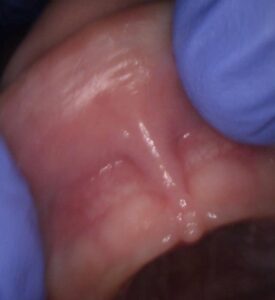


Tongue ties in infants
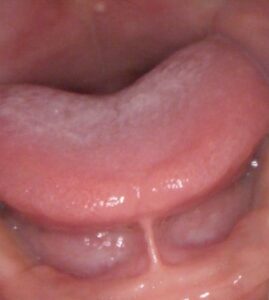
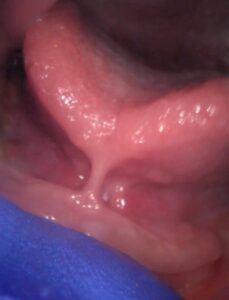
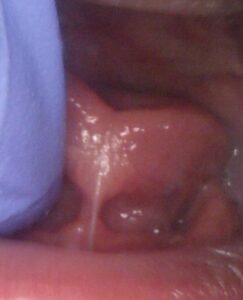
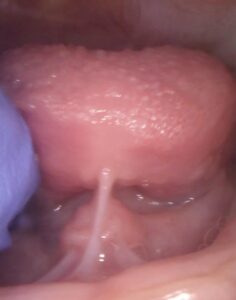
Posterior/Submucosal or Distal tongue tie in an infant seen with lifting the tongue.
The posterior or "hidden tongue tie" can cause the same symptoms including nursing pain & poor weight gain as to the anterior tie in an infant



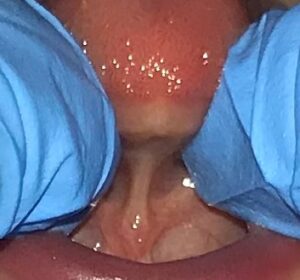
After releasing the tongue- and/or lip-tie, mothers often report immediate relief of pain and a deeper latch.
Bhakti Kulkarni
Ankita Taukari
Does your infant have a tongue-tie?
Toddlers & Older Children
If your child is unable to touch the roof of the mouth with his or her tongue when opening widely, is struggling with speech delay, or speech issues that aren’t resolving, has difficulty eating or getting a good night’s sleep, please explore the sections below or watch this video about tongue- and lip-ties in older children.
Lip ties in Toddlers and older children
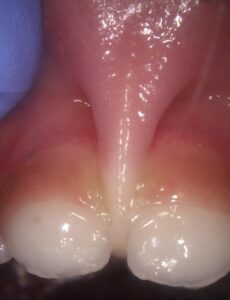
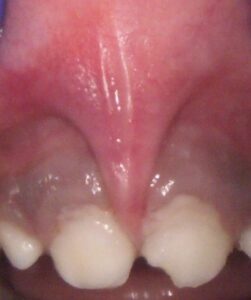
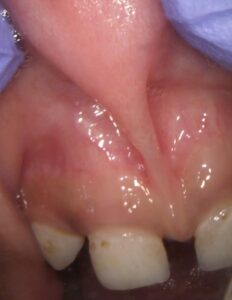
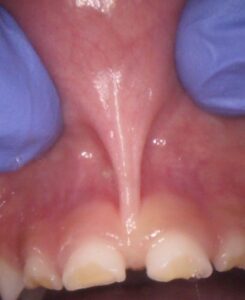
Tongue ties in Toddlers and older children

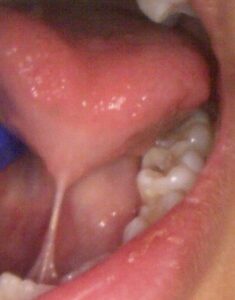
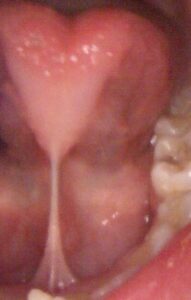
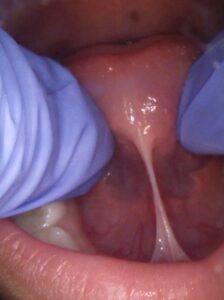
Posterior tongue-tie in a child seen with lifting the tongue.
These also cause similar symptoms as the anterior ties.
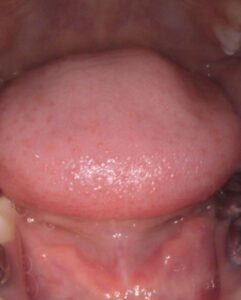
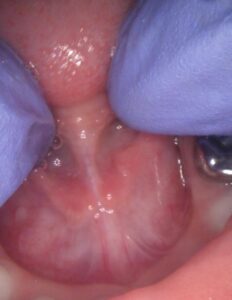
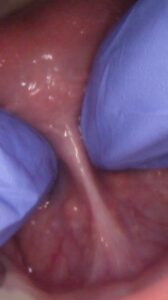

Anugrah Lazarus
SPEECH
A tongue restriction affects speech differently in each individual. Some children with a to-the-tip tie can articulate well (but may struggle with increased effort when speaking). Other children, with a less visible or posterior tie, may have a speech delay or difficulty producing the sounds for L, S, R, T, D, N, TH, SH, CH, DG, and Z. It is especially difficult to roll an r and say LA LA LA LA.
We have seen a significant improvement after a tongue-tie release in our clinic: frustration in communication, difficulty being understood, difficulty speaking fast, difficulty getting words out, trouble with speech sounds, speech delay, and mumbling or speaking softly.
We have seen that many tongue-tied children begin saying new words, even just hours or days after the release! We often drastic improvement in speech.
FEEDING
Children that are tongue-tied often have eating issues from infancy, such as trouble nursing or taking a bottle. When transitioning to solid foods, they may choke, gag, or have difficulty swallowing certain textures.
In childhood, these eating difficulties can persist and are evidenced by only eating small amounts of food, slow eating, packing food in the cheeks like a chipmunk, and pickiness with textures (soft, mushy foods and meats are typically the most difficult, but children can struggle with other foods as well).
SLEEP
A tongue-tied child will often grind his or her teeth at night, snore, or experience other sleep-disordered breathing problems. Releasing a tongue-tie can help a child to sleep more soundly because the tongue will be able to rest on the palate, as it was designed to do, rather than falling back to narrow or block the child’s airway. Sleep-disordered breathing can cause frequent waking, restlessness, bed-wetting, failure to feel refreshed upon waking and accompanying difficulty focusing (which is sometimes misdiagnosed as ADD or ADHD.
Because multiple factors contribute to the problem, such as large tonsils and adenoids, a narrow palate and tongue-tie, often a child will be seen by multiple specialists to try to remedy the problem. In addition, children with tongue-ties often have a history of multiple ear infections and needing ear tubes. They may have had tonsils and adenoids removed. All of these can be complicated by the mouth-breathing that frequently occurs in tongue-tied individuals, due to the low resting posture of the tongue. We have found that when there is a tongue-tie, sleep often improves dramatically after a simple in-office procedure.
Does your child have a tongue-tie?
How the Procedure Works
Release
Recover
Re-Check
Call Us
Reach Us
205, Ashoka Mall Bund Garden Road Pune, 411001
Open Hours
Mon-Sat 10:00 - 18:00
Email Us
kidslaserdental@gmail.com
